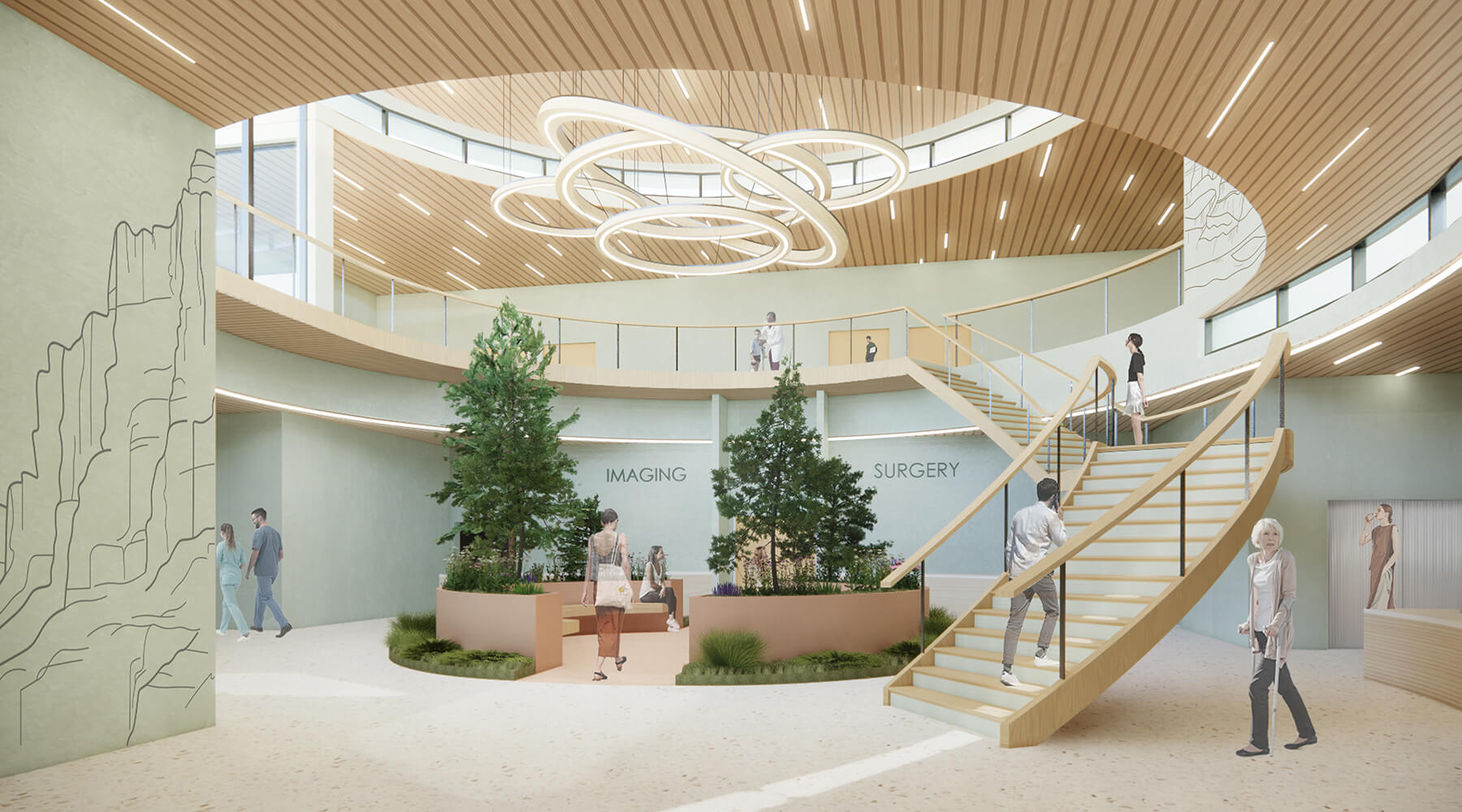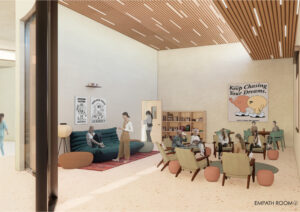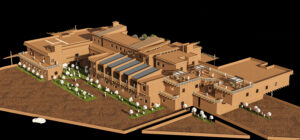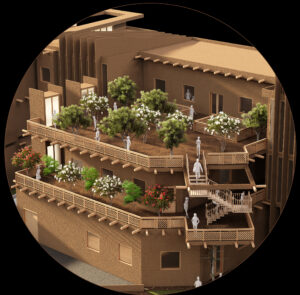Iowa State architecture students win national hospital design competition

AMES, Iowa — Students from the Iowa State University College of Design took home top awards in the American College of Healthcare Architects (ACHA)’s inaugural student design competition.
Participants were challenged to design a Critical Access Hospital for a rural, medically underserved community. They were encouraged to explore design solutions that promote patient-centered care, utilize sustainable building practices and integrate seamlessly into the surrounding community.
Fifth-year architecture students Emily Drennen Hatch, from Plano, Texas, and Ryan VerMulm, from Hartley, won first place for their “Tall Pines Medical Center–Hualapai Nation” project, which focused on the needs of a rural, indigenous population and included an interior aesthetic that incorporates natural materials and plants.
Hamid Akhtarkavan, who graduated with his master of architecture from Iowa State in December 2023, received an honorable mention for his “The Beating Heart of the Desert, Bisbee, Arizona” project.
“We were incredibly impressed by the creativity and thoughtfulness of the student submissions,” Ann Adams, president of ACHA, said in announcing the awards. “The winning designs demonstrate a deep understanding of the complex issues facing rural healthcare and offer promising solutions for the future.”
The winners will be recognized in July at the American Institute of Architects/ACHA Summer Leadership Summit.
Iowa State’s winning projects were part of a fall 2023 studio course created specifically for the competition and taught by Cameron Campbell, associate professor of architecture and interim department chair, with significant involvement by Daejin Kim, assistant professor of interior design.
“Some of the schools we competed with have entire programs focused on healthcare design,” Campbell said. “If our students can compete successfully at the national level, it means we’re doing the right thing.”
That success was bolstered by in-kind support from architecture firms Invision and Shive-Hattery, which provided behind-the-scenes-tours of Critical Access Hospitals they’d worked on, guest lectures in classes and critiques of student work, Campbell said.
A community-owned space

The purpose of a Critical Access Hospital is to serve rural, underinsured or uninsured communities. Hatch and VerMulm first researched marginalized communities and ultimately chose to design their facility for the Hualapai Nation in the desert Southwest.
The two also researched innovative ways to treat behavioral health crises and how to make a hospital feel like a community-owned space. Both VerMulm and Hatch are proud of their commitment to innovation when designing Tall Pines Medical Center.
“My biggest takeaway is that we must always challenge what ‘standard practice’ tells us to do, because we are designing for a community that has unique people with different needs,” VerMulm said.
“This studio experience taught me a lot about pushing ideas and knowing when to ask why,” Hatch said.
“Especially in behavioral healthcare, I found myself asking why specific programs or systems didn’t exist and why traditional hospital architecture can sometimes feel copy-paste even when it isn’t. Being able to ask why certain rules exist and how we can reshape our thinking regarding architecture will propel me forward in my career,” she said.
A healing oasis

Akhtarkavan drew inspiration for his project from the adobe-based architecture prevalent in the Bisbee, Arizona, area and aimed to create a healing oasis in the desert landscape.
“Central to the design is the integration of a verdant healing garden, traditional architectural elements and innovative geometric principles aimed at fostering a sense of belonging, promoting physical activity and enhancing mental well-being,” Akhtarkavan said.
What he enjoyed most about being involved in the studio was the emphasis on teamwork, hands-on learning and innovative design solutions, he said.

“Working closely with peers from diverse backgrounds and receiving guidance from experienced professionals at Invision and Shive-Hattery allowed me to push the boundaries of conventional thinking and approach design challenges with creativity and ingenuity,” he said.
Exploring healthcare design careers
Akhtarkavan now works as an architect for Iowa State’s Department of Civil, Construction and Environmental Engineering. When they graduate in May, both Hatch and VerMulm plan to seek their professional architecture licensure and continue exploring healthcare design.
“Because of this studio and my other experiences with the healthcare design field over the last year, I am considering moving toward healthcare design in my professional career,” VerMulm said.
“I believe that the work Emily and I did was valuable and could really help people dealing with physical or mental health issues, and it is exciting to know that I may be able to help others who are struggling.”
Ultimately, the students’ experience with the ACHA design competition enabled them to take risks and put their learning to work.
“That’s the joy in academic projects — we get to draw inspiration from existing products or ideas and push their limits beyond what is currently possible or accepted in practice,” Hatch said.
— by Lindsey Giardino
Contacts
Hamid Akhtarkavan, MArch Graduate, hkavan@iastate.edu
Emily Drennen Hatch, Fifth-year Student, Architecture, edhatch@iastate.edu
Ryan VerMulm. Fifth-year Student, Architecture, rvermulm@iastate.edu
Cameron Campbell, Associate Professor and Interim Department Chair, Architecture, cameronc@iastate.edu
Heather Sauer, Director of Strategic Communications, College of Design, 515-294-9289, hsauer@iastate.edu
